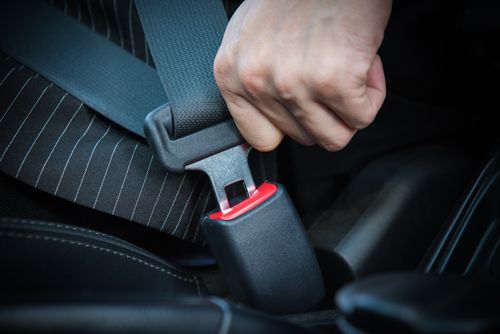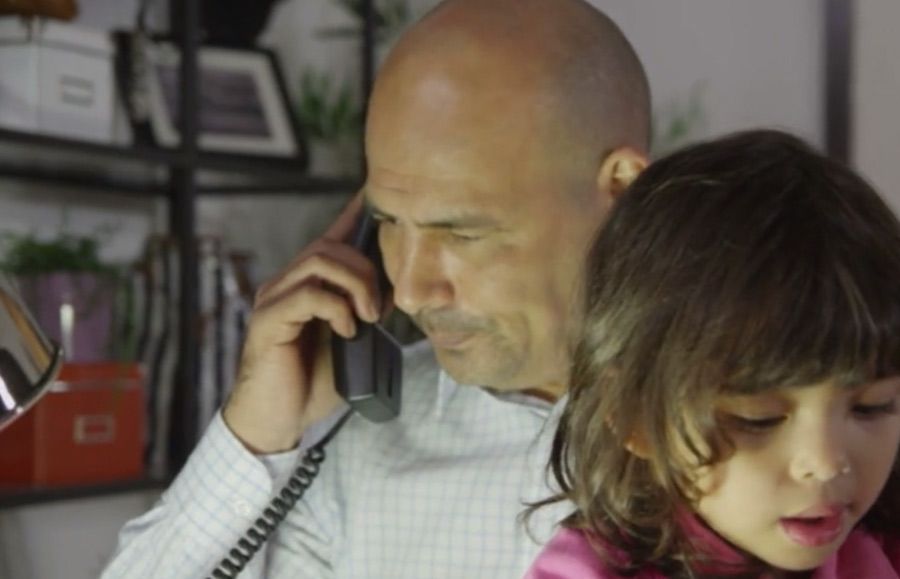When someone suffers an injury in a car accident, they often do not understand their rights to collect compensation. The fact is that while many people can collect compensation for the injury they suffered, as well as the damage to their vehicle, often, their pain and suffering go uncompensated.
Because each accident is different, and because victims of a car accident can suffer a range of injuries, it is difficult to provide an exact number on how much pain and suffering compensation can be collected for a car accident. That’s why working with an experienced car accident lawyer is in your best interest.
Understanding Pain and Suffering Compensation

Victims who suffer injuries in a car accident have different levels of pain, depending on the injury they have suffered. However, remember that pain and suffering is subjective. Law Dictionaries clearly defines pain and suffering, but fixing a blanket dollar amount to the concept is difficult.
In general, insurance companies tend to discount pain and suffering. Let’s face it, while it is easy to quantify monetary losses due to medical bills, lost income, and other tangible losses, every individual’s experience is different.
Pain and suffering encompass:
These losses can be difficult to demonstrate to an insurance company, making the calculation of pain and suffering compensation difficult, even for an experienced car accident lawyer.
At-Fault and No-Fault Insurance Differences
A car accident victim may face another problem when they have suffered an injury. Auto insurance falls into two general categories, at-fault and no-fault. Depending on the jurisdiction a victim’s accident occurred, there may be limitations for pain and suffering. Some of the rules for these specific types of policies are complicated.
At-Fault Insurance and Pain and Suffering
When a car accident victim lives in a state that requires fault to file an insurance claim, a settlement can recover compensation for:
- Medical expenses – Victims can recover financial compensation for medical expenses as part of a standard auto accident claim. These expenses generally include out-of-pocket expenses, including medical visits for their injury. In addition, this may include bills for physical therapy and emotional health visits. In most cases, medical expense reimbursement would be for medical care from the time of the accident until such a time in the future the victim regains 100 percent of their health. In the event the injuries suffered cause permanent disability, all future medical bills could be included.
- Loss of income – After a car accident, victims will generally miss some time from work. This lost income may be included in the claim. Other income losses which may be included are time off to undergo treatment, including physical therapy and mental health care. If the injuries are severe enough that the victim cannot return to work, lost future income may also be included in a claim.
- Pain and suffering – When someone suffers an injury, there is little doubt they are in pain. Pain and suffering are more, however. Car accident victims may work with a personal injury lawyer who can help them determine a reasonable amount of pain and suffering compensation which may be included in a demand for settlement.
No-Fault Insurance Compensation for Pain and Suffering
When a car accident victim lives in a no-fault state, they do not need to show who was at fault for the accident. Regardless of who was at fault, a victim can seek compensation for lost income and medical bills directly from their own insurance company using their personal injury protection (PIP) coverage.
One challenge with PIP coverage is the victim may only collect a percentage of their financial losses for medical bills and lost income. This option may be the only route to compensation for someone who has only suffered a minor injury. However, nearly every state with no-fault coverage offers victims who suffer a serious injury the opportunity to step outside the no-fault coverage and sue for additional compensation.
To do that, the victim must show:
- Who bears fault for the accident – You need clear evidence of fault for the accident, which resulted in an injury. Demonstrating fault can be done by using police reports, witness statements, or in some cases, the testimony of experts.
- High financial losses – In most cases, if the victim’s financial losses exceed their PIP coverage, they may step outside the no-fault restrictions. This option will require a victim to show documentation of their losses.
- Severe injury – Serious bodily injury that results in broken bones, disfigurement, or disability may also result in a victim having the ability to seek additional compensation, including pain and suffering after a car accident in no-fault states.
Car accident victims must seek help understanding their state rules for claims filed under no-fault insurance policies. Before contacting the insurance company, the best option is to ask for a free consultation from an experienced car accident injury lawyer.
Insurance Companies and Pain and Suffering Claims
Regardless of whether a car accident victim lives in an at-fault or no-fault state, they will have some pain associated with their injury. It doesn’t even matter how serious an injury is physically. For example, a back injury suffered in a car accident has the potential for long-term pain. Victims could suffer back and neck pain that could last for the rest of their lives.
Insurance companies often fight back against pain and suffering claims. They feel their only responsibility is to pay for physical damage to a vehicle, medical bills, and lost income. In many cases, they will make a counteroffer based on monetary losses and work hard to diminish the value of non-monetary losses, which include pain and suffering.
Proving Pain and Suffering Claims After a Car Accident
Because pain and suffering is a subjective concept, so determining how much compensation one should seek is hard.
To prove a claim, a victim can provide:
- Medical records – Proper medical records can help prove pain and suffering. This type of proof is one of the many reasons why car accident victims must ensure they follow through with all follow-up care. Medical records will detail a victim’s diagnosis, but they will also document the treatment someone receives for their injuries and their long-term prognosis.
- Photographic evidence – Thanks to technology, our cell phones may be the best source of evidence showing injuries. In addition to taking pictures of injuries, a victim can also video themselves and show the impact of those injuries on their daily activities.
- Written evidence – Victims can maintain a journal of their recovery. These journals can also include information such as the level of physical pain a victim is suffering and the emotional distress they are feeling due to limitations caused by their injury.
- Statements from others – Friends, neighbors, and family members can be very helpful by providing statements that state the changes they observe in victims following an accident. These statements can be powerful when attempting to show the impact of pain and suffering after a car accident.
- Medical statements – Specialists in pain management, therapists, and medical professionals can often submit an assessment of the physical and mental pain and suffering of a car accident victim.
While all of this information may be helpful, it is also important to understand that every jurisdiction may have specific requirements pertaining to showing proof of pain and suffering. This potential complication is another reason why it is so important for a car accident victim to consult with a personal injury lawyer.
Settlement Demands and Insurance Negotiations Over Pain and Suffering
When a car accident injury lawyer files a settlement demand for their injured client, they will nearly always have a figure in mind for pain and suffering, which is included in the demand. However, the insurer will likely make a counteroffer and, in doing so, will diminish this portion of the claim significantly. The reasons for this are often misunderstood by the victim. Insurers are skeptical of pain and suffering claims. Generally, this means they will use their own calculations to determine how much a pain and suffering claim is worth.
Insurance companies use pain and suffering formulas that are designed as a one-size-fits-all approach. This application is ineffective in most cases because no accidents are the same, no injuries are the same, and no victims are the same.
One of the most common ways insurers calculate pain and suffering is to use a multiplier against the victim’s medical bills. This method may differ significantly from what a skilled lawyer feels they can obtain for a car accident victim.
Negotiations happen for a reason. Insurers are searching for a way to protect their bottom line and are concerned about paying fraudulent claims. Most car accident victims have a legitimate claim against the driver who acted negligently and caused their injuries. No car accident victim who must live with pain and suffering due to their injuries should be forced to accept the insurer’s idea of what their claim is worth.
Time Frame to Settle Car Accident Injury Claims with Pain and Suffering
Once a victim can show they did not cause their accident or the resulting injuries, several factors can complicate the claims process:
- Statute of limitations – Every state has different rules regarding when a claim must be filed on behalf of a victim. These statutes are designed to protect the victim and the responsible party. Knowing the specifics of the law in these cases is important.
- Maximum medical improvement – The American Medical Association (AMA) defines this as the point at which a patient can no longer expect any improvement in their condition regardless of medical intervention. Filing an accident claim before this time may result in the victim’s losses being undervalued.
- Speed of negotiations – At the outset of a claim, it is impossible to determine how long the negotiations may take to reach a fair settlement.
Car accident victims must focus on regaining their physical and mental health following an accident. Gathering evidence of their pain and suffering, handling insurance claims, and negotiating a settlement are better left to someone who fully understands local personal injury law and the insurance rules that impact the case.
Pain and Suffering Claim are Complex

In one recent year, more than five million people suffered an injury in a car accident. Each accident is unique, and there may be one or more parties responsible for the negligent conduct which resulted in the accident.
Unfortunately, without specific information regarding the type of accident, the extent of a victim’s injury, the long-term impact of the injury on the victim, and the laws in the state where the accident occurred, determining the true amount of pain and suffering a car accident victim may include in a settlement demand is nearly impossible.
A full case evaluation can help a car accident victim better understand the true value of their claim, including the compensation they may seek for pain and suffering.








